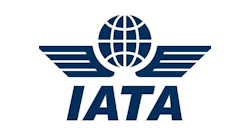The aviation industry is on record stating its objective to drastically reduce its carbon footprint. At its Annual General Meeting in October, the International Air Transport Association (IATA) approved a resolution for the global air transport industry to achieve net-zero carbon emissions by 2050. The commitment was aligns with the Paris Agreement framework to limit global warming.
Big changes are necessary, but small improvements can contribute to the industry’s efforts to achieve these results.
Earlier this week, as part of the Sustainability in Aviation – Meeting Current Environmental Challenges webinar, conducted by AerospaceTechReview.com, StorkJet CEO Renata Niedziela offered an excellent example of this concept.
While larger plans such as the use of Sustainable Aviation Fuels (SAF) and the deployment of electric or hybrid power aircraft are being developed, Niedziela offered an overview of her company’s fuel efficiency software and where CO2 emission reductions could be achieved immediately.
Niedziela acknowledged managing a fuel program can be complicated as complex flight operations specific to individual airlines can change at a moment’s notice. But with StorkJet’s solution, a prediction model looks at various areas of an operation where fuel burn takes place, including flight planning, auxiliary power unit (APU) consumption, taxi, take-off and flight phases like climb, cruise and descent.
The solution offers users an opportunity to identify where fuel burn could be reduced and take action to limit the amount of CO2 produced.
According to Niedziela, reducing fuel consumption by 2 percent for an airline that operates 100 aircraft could result in 38,000 tonnes less CO2 being produced. Simply put, little changes make a difference.
We should continue working to achieve grand-scale industry improvements. But seeking small improvements on a daily basis is just as important.
So often, the old adage is true. It’s the little things that can make the big things happen. This certainly applies to a more sustainable aviation industry.





